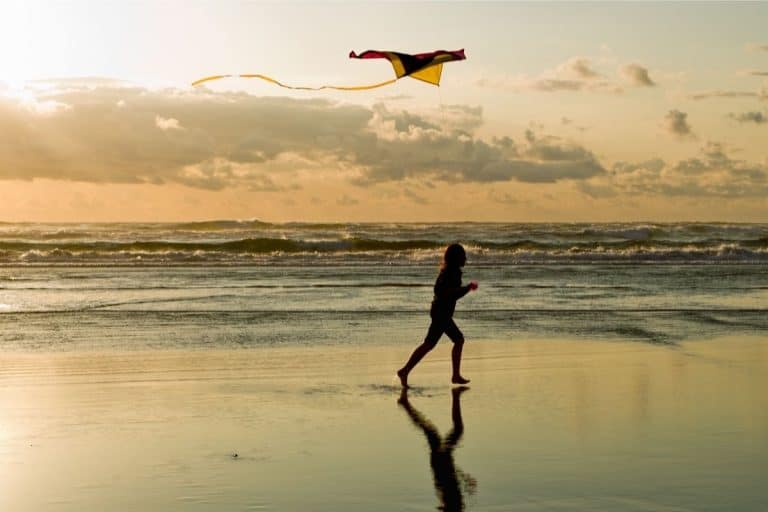How to Protect Your Hands While Flying a Kite
Many people find enjoyment from flying kites, and this skill-based activity can undoubtedly be rewarding in numerous ways. Other than the risk involved concerning the location to fly your kite, there are a few personal safety risks for kite flying enthusiasts too. So, how can one protect their hands while flying a kite?
Enthusiasts can protect their hands and fingers from cuts, punctures, and abrasions by wearing durable, comfortable, water-resistant hand or finger gloves. Wearing finger protectors will assist in preventing the formation of calluses and blisters, or prevent cuts and abrasions to the fingertips.
While sustaining injuries to the hands and fingers while flying a kite is somewhat rare, it is still a possibility and can cause serious harm. Fortunately, all of these injuries can be avoided with the appropriate gear and measures. Read on to find out how to protect your hands and fingers while flying a kite before you head out for your next session.
Ways to protect your hands while flying a kite
It’s mostly common knowledge that one should never fly a kite in unfavorable weather, enclosed spaces, or crowded areas. But, the safety of those operating kites is frequently overlooked. For best protection, those flying kites should always take measures to ensure that their hands and fingers are protected by wearing gear and clothing that covers exposed skin.
How could flying a kite injure hands and fingers?
Flying a kite is commonly seen as a relatively safe activity granted that the environmental and spatial conditions are appropriate, and this is mostly true. But, even in the best conditions, the risk of sustaining an injury to the hands and fingers while flying a kite is still prevalent. The kite components can harm the user in a range of ways, the severity of which would rely on various factors.
The string attached to the kite moves at high speeds while in the air, especially during strong winds. These strings can become quite hazardous when kept under tension and could cut or burn the skin. Other kite parts also pose dangers, such as the spine and spar (framework). These can behave like sharp flying spears when in the air. Handling kites may also cause calluses and blisters to form over time, and fingers will need protection in this regard as well.
Do all kites pose the same risks?
No, while all kites pose a risk of injuring the hands and fingers during flight, some kites are far riskier than others. The kite’s overall size and robustness will influence this threat.
The biggest risk factor is the type of of the string/thread being used. Affa kites (fighter kites), for example, are intended to cut another kite’s thread while in the air resulting in it drifting. These commonly feature Glass Manjas, which are stings that are gummed, colored and coated with powdered glass that is incredibly sharp and has led to many deep gashes in the hands and fingers of those controlling these kites in addition to injuring birds during flight.
Kiting Planet is an Amazon Associate. As an Associate, I earn from qualifying purchases.
Best gloves for kite flying
There are plenty of options to kite flying gloves, and it may be perplexing when determining which one to invest in. Besides being effective in keeping your hands and fingers safe from cuts and abrasions, the gloves should keep the controller’s hands comfortable and dry. This will ensure that you are protected from injury but still have complete control over your kite at all times. Features such as non-slip and form-fitted will also increase functionality.
Finger gloves for kite flying
Some enthusiasts opt for finger gloves instead of full gloves for protection. There are plenty of finger glove options, focusing on protecting the fingers or the primarily used fingers during kite flying. These may not provide complete protection compared to full-hand gloves but can offer users more freedom and control over their kite.
The Aternee 2 Finger Fishing Glove is designed with a non-slip and high-density cloth that is breathable, water-resistant, and dry fit, making it incredibly comfortable and functional. These gloves can be wrapped around the wrist for support, topped with adjustable elastic bands, and protect the thumb and index finger from cuts and abrasions.
Finger protectors for kite flying
Some finger protectors would not protect your hands and fingers from cuts, punctures, and abrasions, but they can do something that many gloves cannot – preventing calluses and blisters. Handling kites and strings can be quite taxing on the skin, and discovering an array of bumps and painful skin formations once you get home will undoubtedly be frustrating.
These Gel Finger Cots from Amazon are designed to prevent calluses and reduce the risk of tension-related injuries by cushioning to the knuckles of the fingers. But, they also support the user’s grip and handle over the kit as well. These finger sleeves have been constructed with nylon, gelatin silk, and spandex for optimal comfort, breathability, and flexibility.
Variants that protect the fingers alone are also quite popular for kite fliers. These Colorful Silicone Rubber Finger Protectors are suited to protecting the fingertips. They protect the fingertips from cuts and abrasions while flying kites. These reusable finger protectors have been constructed with durable latex, which is natural and flexible.
Cut-resistant gloves for kite flying
One of the most popular and effective gloves for flying kites is the multipurpose Brace Master Kiting, Sailing, Fishing, and Kayak gloves. These are especially suited for heavy-duty kite flying and are designed to protect the wearer’s hands and fingers from sharp strings and abrasions.
These gloves are durable, constructed with full leather with full finger protection, and form-fitting with ergonomic curves for optimum comfort and fit. They are finished off with adjusts wrist straps for a snug and secure fit and provide wearers with incredibly adept nimbleness and control. These gloves support grip, are water repellent and are robust against cuts, tears, and punctures.
While there are some risks posed for hands and fingers’ safety while flying a kite, there are plenty of simple and effective measures that will avoid injury. Always ensure that exposed skin is covered and that you wear proper hand gear before venturing out for your next kite-flying session.





